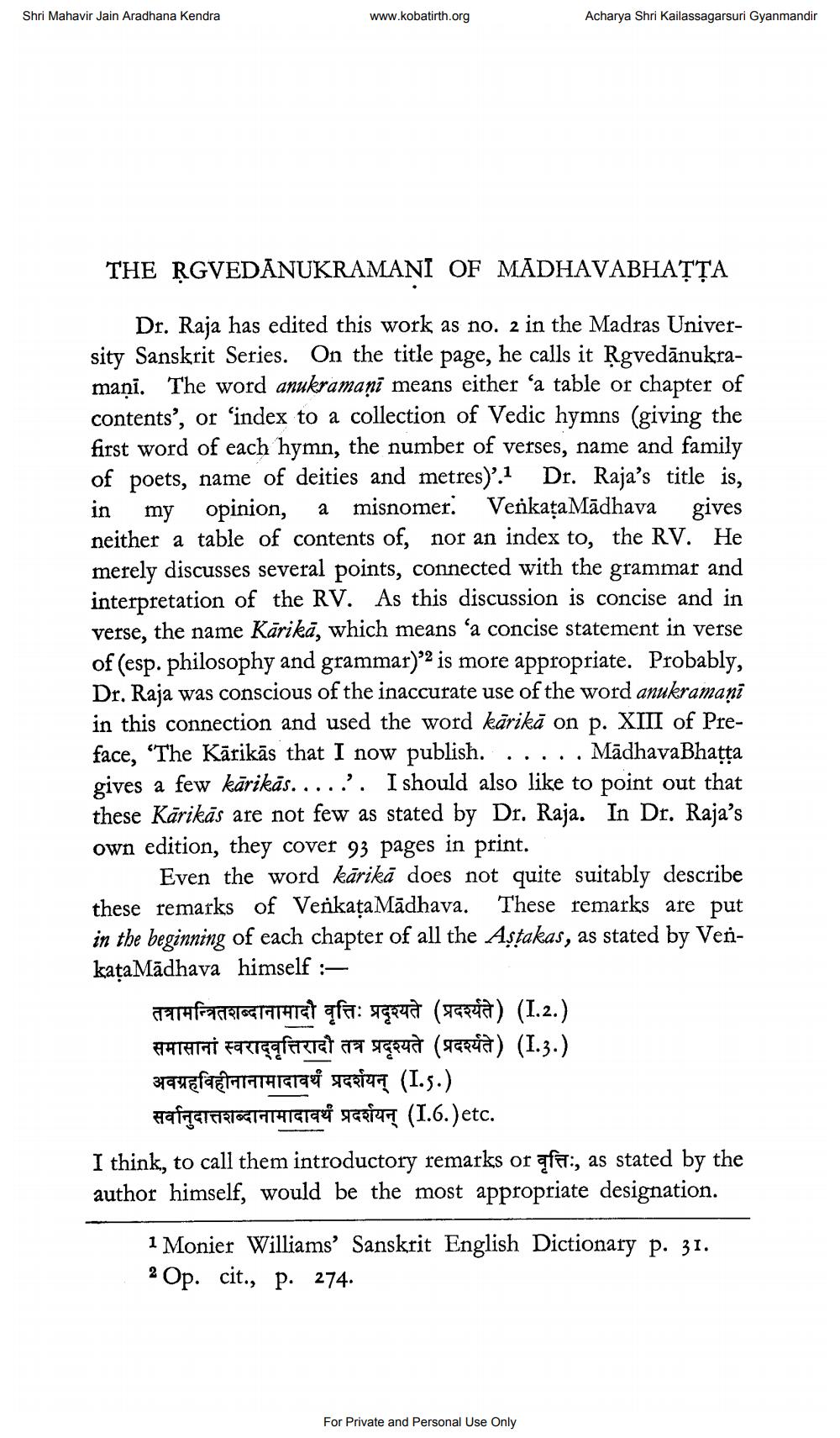________________
Shri Mahavir Jain Aradhana Kendra
www.kobatirth.org
Acharya Shri Kailassagarsuri Gyanmandir
THE RGVEDĀNUKRAMANI OF MADHAVABHATTA
Dr. Raja has edited this work as no. 2 in the Madras University Sanskrit Series. On the title page, he calls it Rgvedānukramaņi. The word anukramani means either a table or chapter of contents’, or 'index to a collection of Vedic hymns (giving the first word of each hymn, the number of verses, name and family of poets, name of deities and metres)'.1 Dr. Raja's title is, in my opinion, a misnomer. Verkața Mādhava gives neither a table of contents of, nor an index to, the RV. He merely discusses several points, connected with the grammar and interpretation of the RV. As this discussion is concise and in verse, the name Kārikā, which means “a concise statement in verse of (esp. philosophy and grammar)"2 is more appropriate. Probably, Dr. Raja was conscious of the inaccurate use of the word anukramani in this connection and used the word kārikā on p. XIII of Preface, 'The Kārikās that I now publish. . . . . . MādhavaBhatta gives a few kārikās...... I should also like to point out that these Kārikās are not few as stated by Dr. Raja. In Dr. Raja's own edition, they cover 93 pages in print.
Even the word kārikā does not quite suitably describe these remarks of Verkața Mādhava. These remarks are put in the beginning of each chapter of all the Astakas, as stated by Verkata Mādhava himself :
Tarefarreterarurat afat: sigaud (repeat) (I.2.)
ATATÜ Farçalacat at sigaud (seaua) (I.3.) spaneletaramarrari tarina (I.s.)
Hafagaleataramuneradi narica (1.6.)etc. I think, to call them introductory remarks or afei, as stated by the author himself, would be the most appropriate designation.
1 Monier Williams' Sanskrit English Dictionary p. 31. 2 Op. cit., p. 274.
For Private and Personal Use Only




